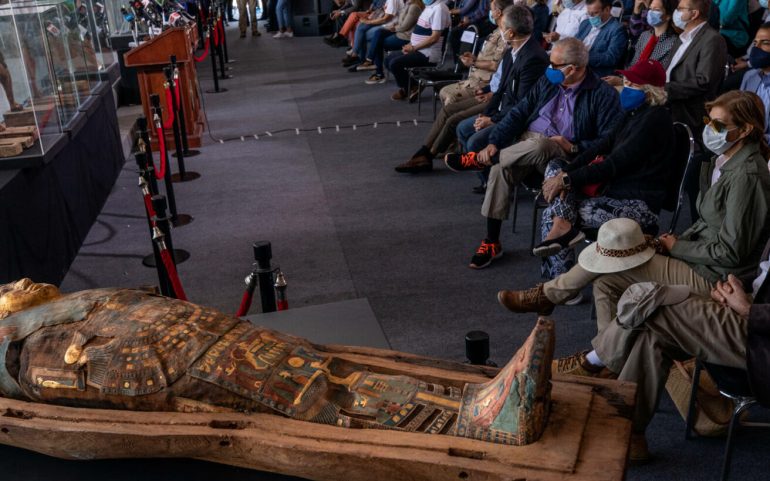In a very difficult year for the living, the world of the dead comes to pull our minds from the pandemic for a while with a very important archaeological discovery.
Even better, these 100 intact sarcophagi is just the beginning of the treasures that the archaeological dig is expected to bring to light in the near future.
The secrets of Sakkara have just begun to be revealed and the eyes of the scientific world are focused on the famous necropolis of ancient Egypt.
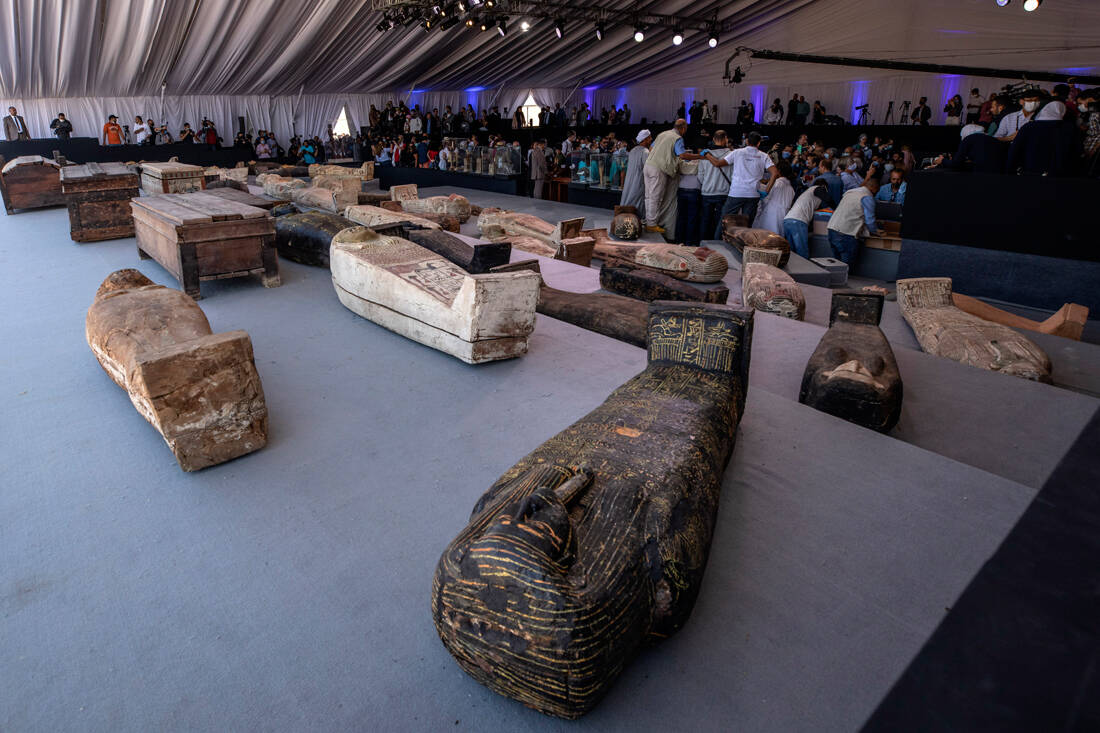
"Even the 1% of those buried in the area are not what we present today," said the Minister of Antiquities, Khalid el Anani, opening the research appetite for the future.
The unique collection of the 100 intact sarcophagi of the 26th Dynasty was hailed as the biggest discovery of the world this year of archeology.
The sarcophagi with the fancy colors, the vivid representations and the hieroglyphics, but also the mummies that hide inside them, come to tell a new story…
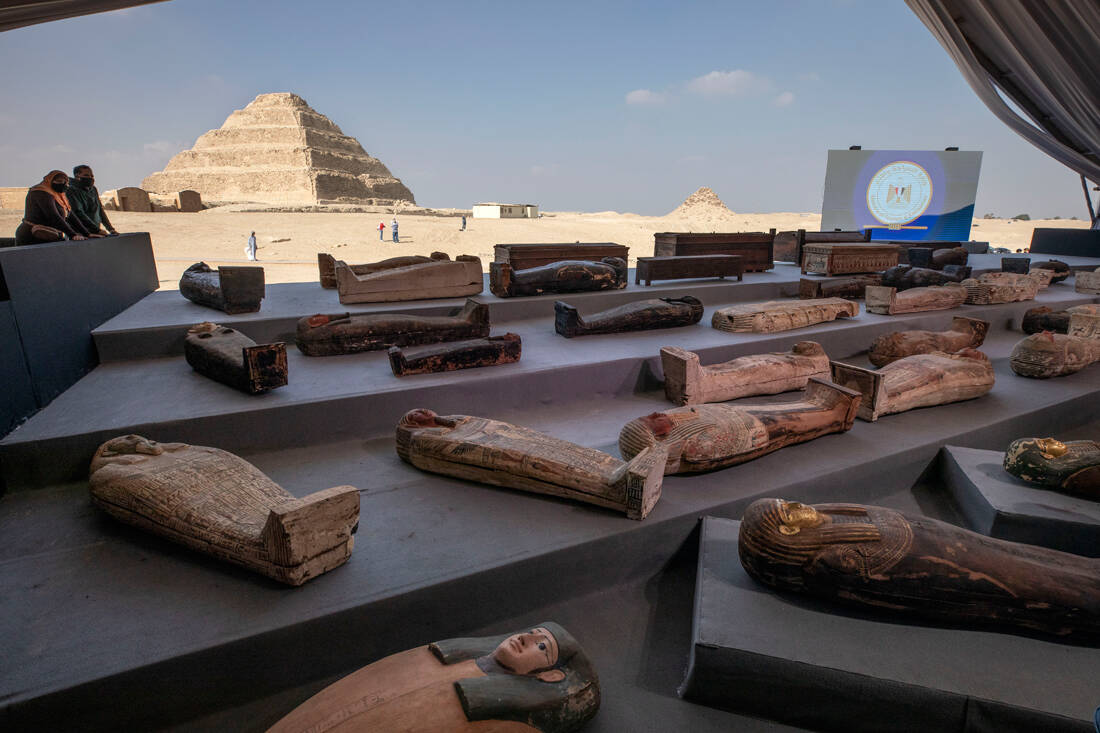
Flirting with a big announcement for days, the Egyptian Minister of Antiquities was especially happy on November 14, when he made the big revelation about the 100 sealed wooden shrines with the impressive decoration and the hieroglyphics.
Inside, an equal number of well-preserved mummies aged 2.500 years. The announcement came after a series of such findings came to light in Sakkara in September and October, when they were identified. another 59 in total intact sarcophagi.
The new 100 were pulled from a depth of 12 meters and rather accidentally. The secretary general of the Supreme Council of Antiquities of Egypt, Mustafa Waziri, was moving debris with his team from the spot when they stumbled on the ancient shrines.
Saqqara was a well-known necropolis of the pharaohs of ancient Egypt and the findings confirm this.

Along with the sarcophagi, burial masks were also discovered, as well as more than 40 statues of Socrates, the crane-shaped god of the necropolis of Memphis. All of them have remained intact for at least 2.000 years.
Speaking at a truly impressive press conference, with dozens of sarcophagi scattered throughout the area, Minister Khalid al-Anani praised archaeologists for the great finds, which date from the 6th-1st century BC.
"They worked day and night and I am very proud of the result," the minister said. The Smithsonian Channel has already agreed on a mini-series documentary which will be released in 2021 ("Tomb Hunters") to tell the unique story of the discovery.
And it's really impressive in all of it. At a previous press conference in October, Egyptian officials unveiled a sarcophagus live.
- Greg Lewis 🇳🇿🇪🇬 (@NZinEgypt) October 3, 2020
- Greg Lewis 🇳🇿🇪🇬 (@NZinEgypt) October 3, 2020
Now it was time for something even bigger: not only did they open a sarcophagus in front of the lens, but they also saw it inside with the help of X-rays.
The x-ray showed that the resident of Larnaca was an adult around 40 and his brain had been removed from his nose, as part of the standard procedure for embalming of.
That the ancient Egyptians were meter in embalming we did not expect to know now obviously, the show was however very impressive…
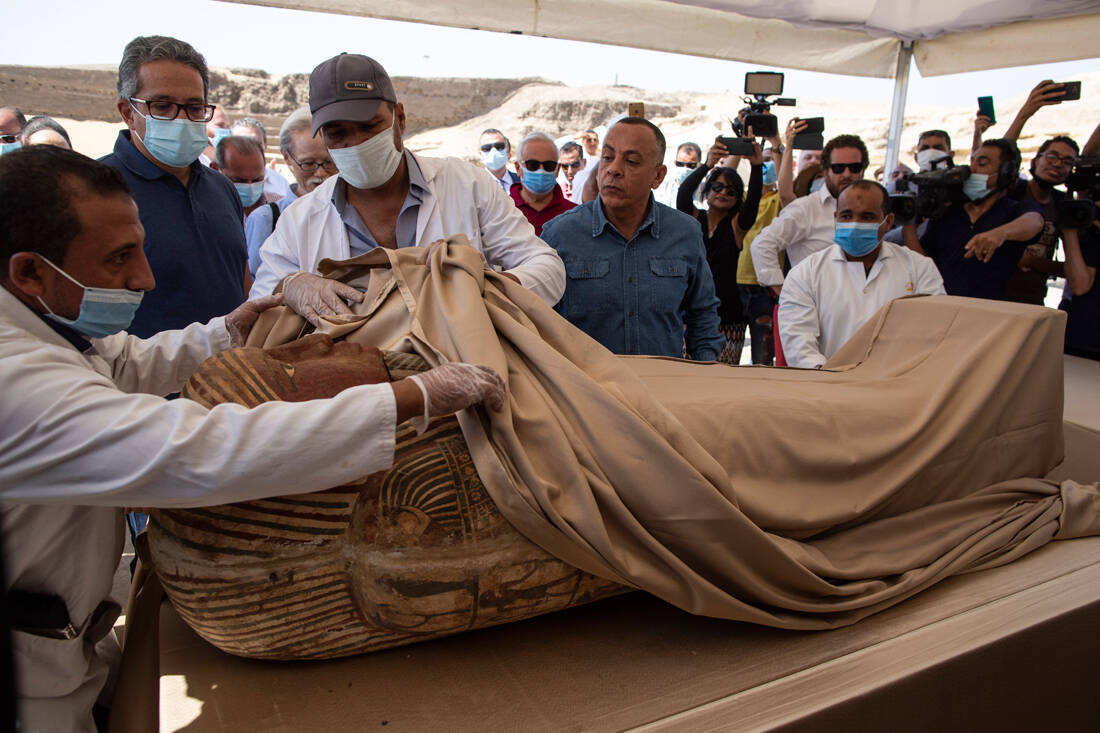
Egyptologists everywhere welcomed the announcement, as finding unprotected sarcophagi of the period is a rare occurrence. Salima Ikram, an archaeologist at the American University in Cairo and a member of the Saqqara excavation, described the discovery as "extremely important".
"This is extremely impressive, it's a lot more than we already have," said Campbell Price, curator of Egyptian Antiquities at his Museum. Manchester, which houses one of the most complete collections of Egyptian antiquities in the world.
Scholars' optimism translates into knowledge. The possibilities to learn much more about the ancient necropolis but also about the society that supported it are now inexhaustible.
Saqqara, located on the left bank of the Nile and some 30 kilometers south of Cairo, is one of the most important necropolises of Egyptian culture.
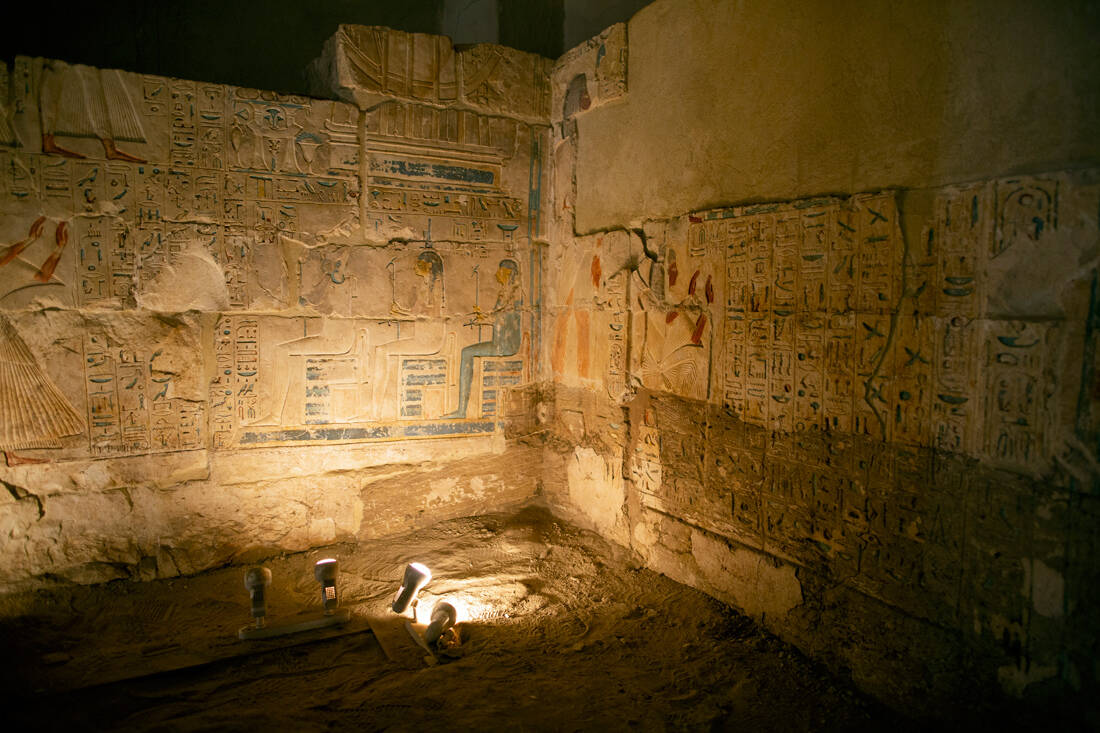
All the glory may be stolen by the Great Pyramid of Cheops in the other famous necropolis, Giza, but the stepped pyramid of Sakkara is at least 200 years older.
Saqqara not only hosts Egypt's oldest surviving pyramid, but is also one of the most important burial sites Pharaoh and high priests, since the archaic period of the first Egyptian dynasty.
However, according to the Minister of Antiquities, the previous 59 and the new 100 sarcophagi belong to much later times of the rich Egyptian history.
In other words, they come from the late Egyptian period (664-332 BC), but also the Hellenistic Ptolemaic Kingdom, when the Greeks ruled Egypt as kings (305-30 BC).
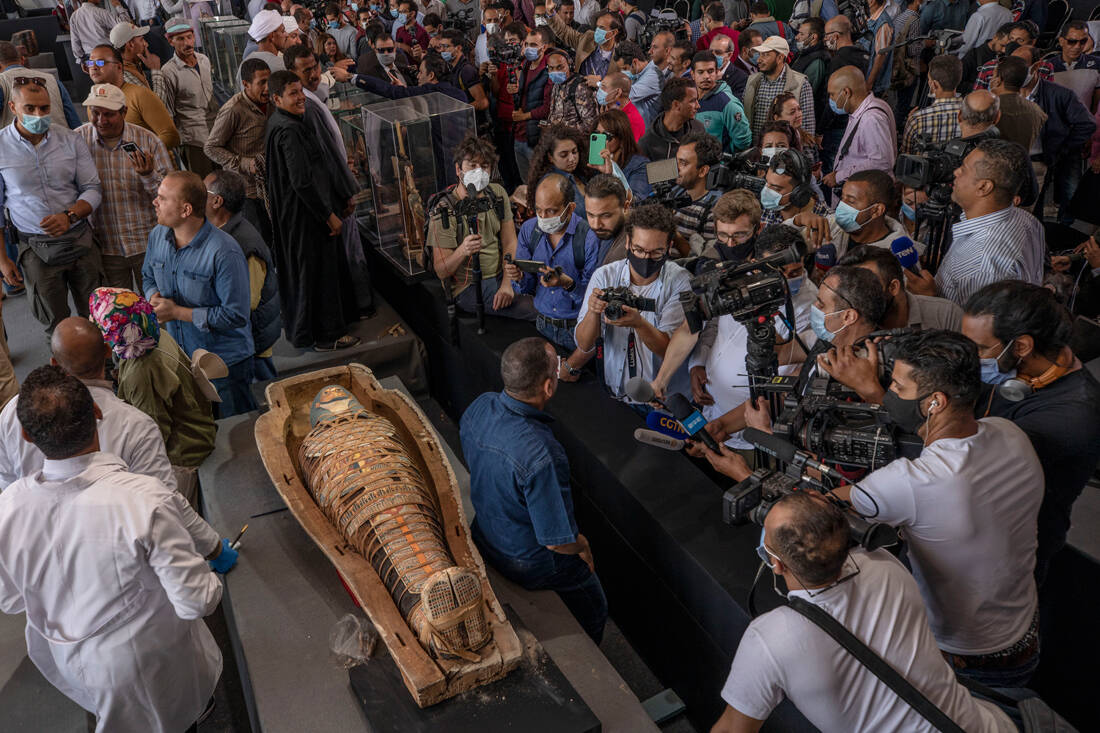
It was at this stage that Sakkara was more than just a cemetery. Even royal. It was now a place of worship, Campbell Price tells us, like an ancient Mecca, where people from all over the eastern Mediterranean came to worship.
The large building complexes and pyramids of Sakkara were thousands of years old. The place was sacred, a place where gods and kings used to be buried, and many wanted to be buried next to them.
"Sakkara would be the perfect place to bury yourself," the academic explains, "had this bright, divine energy that would help you move on to the afterlife."
Recent research with new imaging techniques has revealed the remains of innumerable temples lying under the sand.

Archaeologists also have in their hands millions of literally stuffed animals, especially dogs, cats and birds, which they believe were left here as offerings.
An excavation in November 2019 brought to light mummified cobras, crocodiles, and even two small stuffed lions. The tomb was inviolable for 4.400 years and Netflix made a documentary on the efforts of archaeologists to decipher its meaning ("The Secrets of Sacramento Tomb").
Sakkara speaks recently and talks a lot. Only we do not know what exactly he says. We make assumptions, as reconstructing a comprehensive story has not been an easy task.
Last April, another excavation yielded an underground embalming laboratory. Which indicates that Sakkara had become a thriving business of funerals and funeral management.
Archaeologists now know that Sakkara sarcophagi and burial masks were for all budgets. And prosperous as the necropolis was commercial, they no longer followed protocols and customs.
As Aidan Dodson, a professor of Egyptology at the University of Bristol, tells us, Sakkara's funeral homes have come to use even older, looted tombs. They were constantly looking for new places for new coffins and burying the dead even under the ancient pyramid.
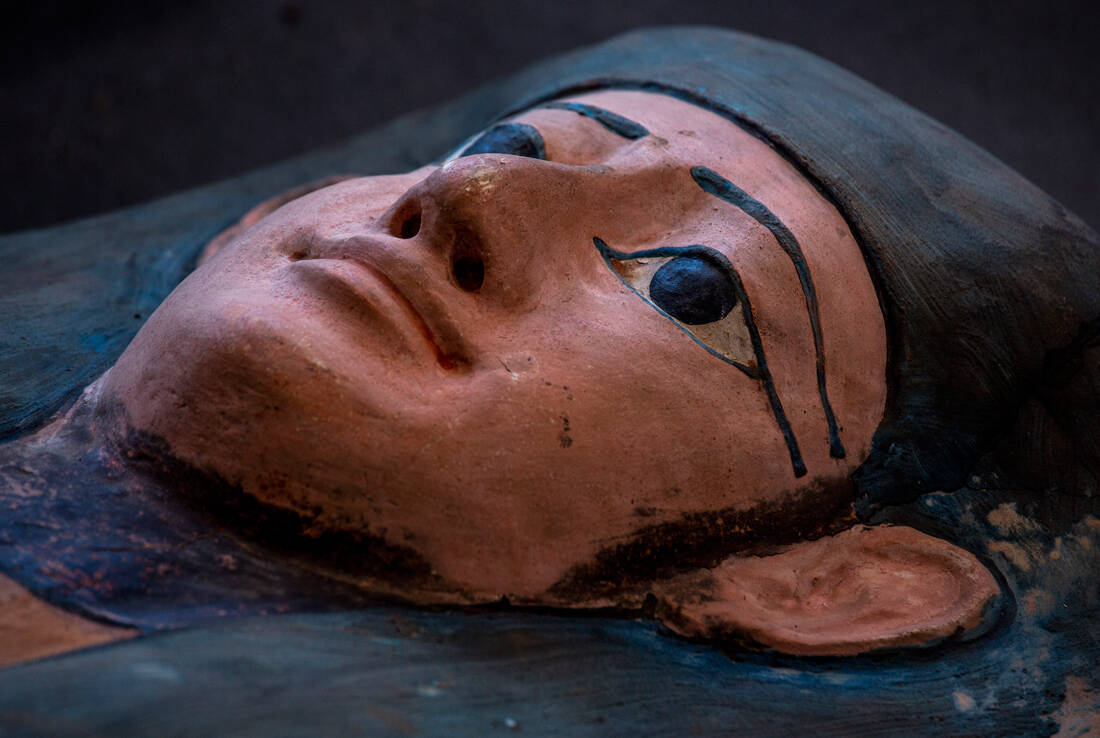
Something that complicates the work of archaeologists today, as you can find mummies side by side with a difference of millennia. Sakkara also has findings everywhere, "it is difficult to dig and not find anything", Affirms Salima Ikram.
The last 100 sarcophagi came from an area north of the stepped pyramid, next to the temple dedicated to the cat-like deity Bastet, who was worshiped at least by the Second Dynasty (c. 2890 BC).
In this building complex, for example, older tombs have been used to house hundreds of stuffed cats.
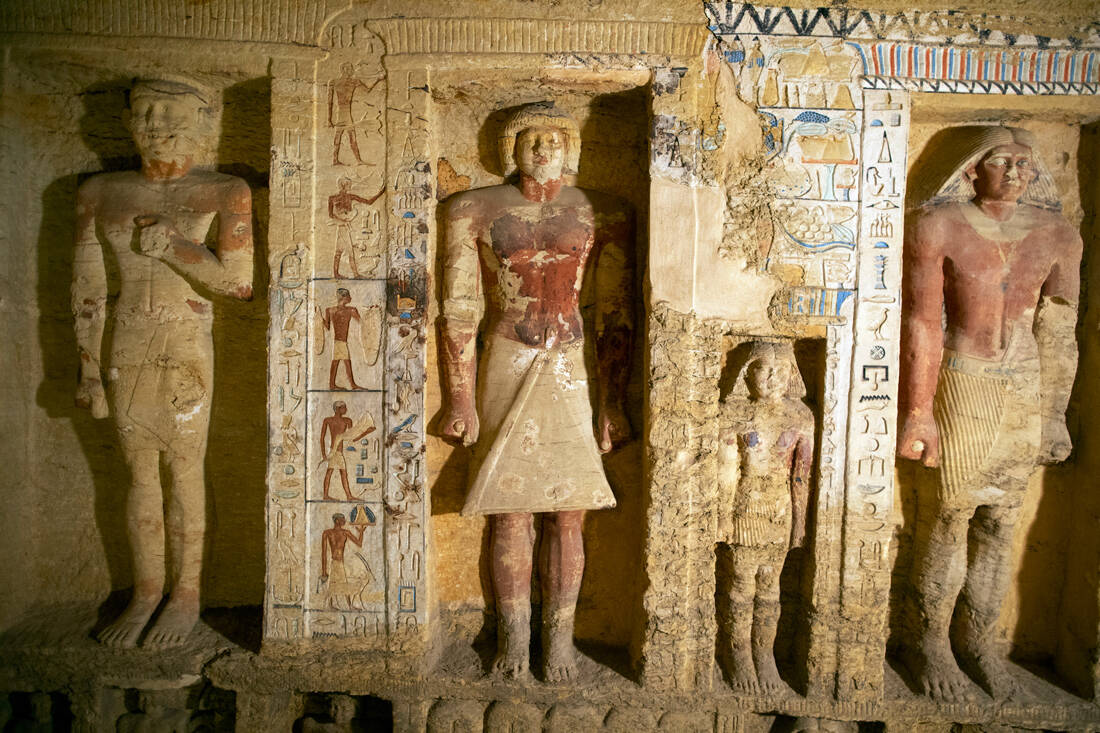
Despite the impressive press conferences and announcements, none of the recent findings have been published for the time being in an archaeological journal. Egyptologists around the world are waiting for scientific articles to come to a conclusion and draw conclusions.
"We hope the Department of Antiquities will make the archaeological finds available," Price said, echoing the wishes of academic scholars. Mummies, even if they do not hide an important tenant, are important in themselves.
The site is sacred, a great burial site for humans and animals, says Ikram. Even sarcophagi themselves have much to say to Egyptologists. Who reconstruct the Egyptian technology even from the evolution in the design of sarcophagi.

As for the hieroglyphic representations of sarcophagi, when they decode they will give us information about the people who live inside them, names and usually social role.
And precisely because there are so many, it is possible that they may even reveal family ties. Such family trees are extremely important for the study of Egyptian culture, explains Price, who believes that the discovery will also offer an interpretive framework for centuries-old findings that remain unexplained.
Although they have only seen them from photographs, the experienced eyes of academics see a lot. "We are now seeing visual similarities between these new findings and unspecified objects we have in European museums," he said.
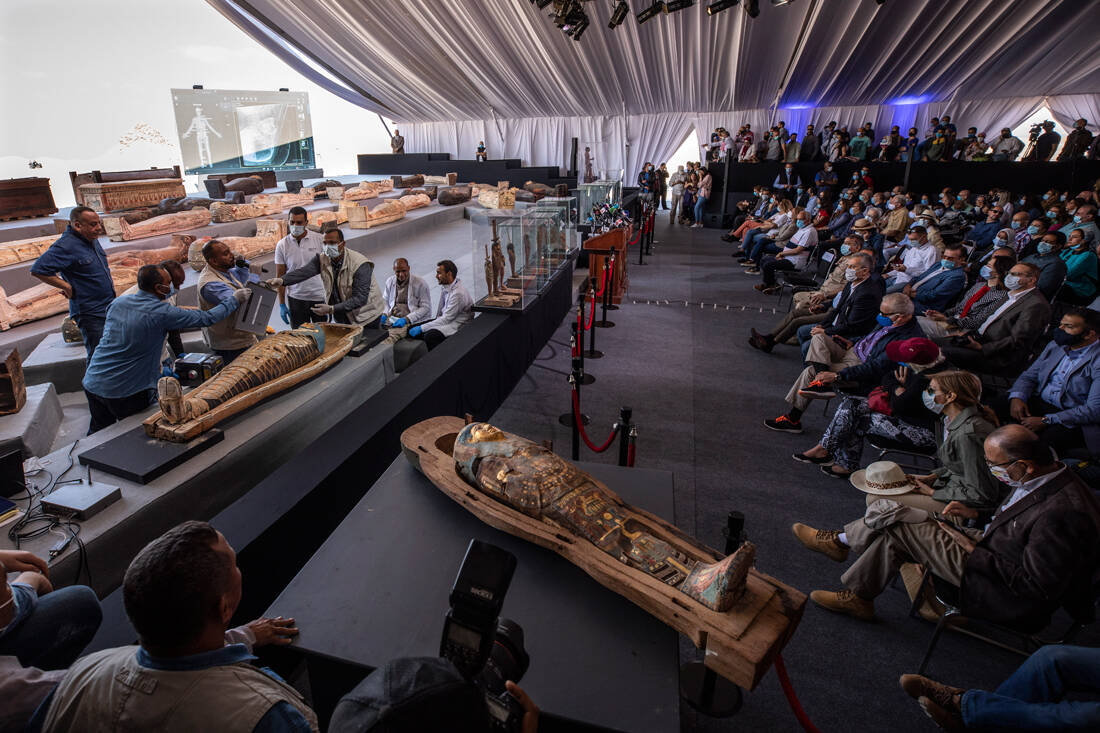
The Minister of Antiquities stated in the press conference that the mummies will be scattered in several Egyptian museums, including the Museum of Egyptian Antiquities and the National Museum of Egyptian Culture, both in Cairo, but also the Great Egyptian Museum in Giza (which is expected to open its gates in 2021).
It is certain that it was the excavation that captivated the eyes in the difficult 2020. And even more certain is that it will not take long to hear again about Sakkara and the unseen secrets of the necropolis…
